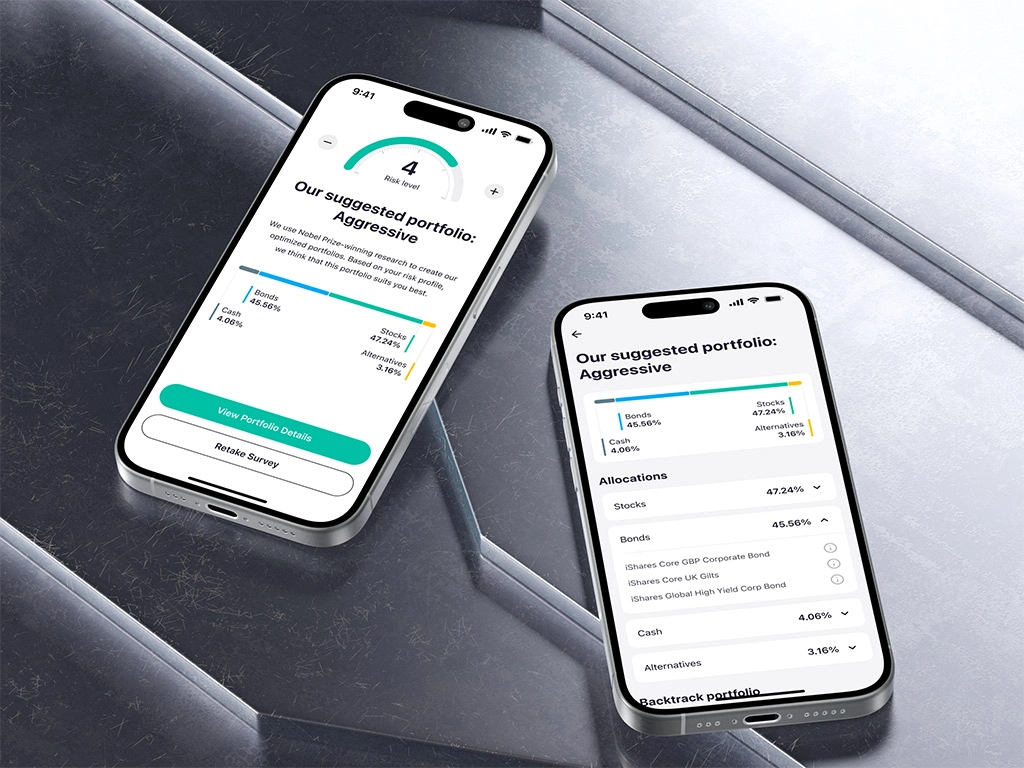Comparing Different Banking Services: Finding the Right Fit for You
Are you tired of feeling like just another number in a sea of banking options? Well, you're in good company! Choosing the right banking service can be a daunting task, with countless options claiming to offer the best features and benefits. But fear not, my friend!
In this article, we'll throw out all the jargon, cut through the fluff, and help you navigate the murky waters of banking services. So, grab a cup of coffee, sit back, and let's find the perfect fit for your financial needs!
Importance of Choosing the Right Banking Service
Choosing the right banking service is imperative in today's financial landscape. Here's why:
- Tailored Financial Solutions: Different banking services offer various features and products that cater to specific needs. Whether you require a basic checking account or complex wealth management services, selecting the right provider ensures your financial requirements are met effectively.
- Competitive Interest Rates: Banks vary in terms of the interest rates they offer on savings accounts, loans, and credit cards. By researching and comparing different banking services, you can secure favorable rates that maximize your savings and minimize your borrowing costs.
- Service Quality: The level of customer service provided by a banking service directly impacts your experience. Finding a service with reliable and responsive customer support ensures that any issues or concerns are promptly addressed.
- Convenience and Accessibility: Consider the convenience of branch locations, ATM networks, online banking facilities, and mobile apps. These factors impact how easily and efficiently you can manage your finances.
- Security and Protection: The security measures implemented by banking services differ, affecting the safety of your funds and personal information. Assessing the reliability and robustness of their security protocols is vital to safeguard your financial well-being.
By carefully evaluating these factors and selecting the banking service that best aligns with your needs and preferences, you can optimize your banking experience and achieve your financial goals.
Types of Banking Services
Traditional Brick-and-Mortar Banks
Traditional brick-and-mortar banks offer a range of banking services to their customers. These banks have physical branches where customers can visit to conduct their banking activities. One advantage of traditional banks is the availability of in-person assistance from bank tellers and advisers.
Additionally, they offer a wide range of services such as checking and savings accounts, loans, and investment options. However, traditional banks may have higher fees and stricter account requirements compared to other banking options. It's important to consider factors like convenience, fees, and account requirements when choosing a traditional bank for your banking needs.
Benefits of Traditional Banks
Traditional banks offer a range of benefits that make them a popular choice for many individuals. One key advantage is the extensive physical presence, with branches and ATMs available in various locations, providing convenient access to banking services.
Additionally, traditional banks often offer a wide array of financial products and services, including loans, mortgages, and investment options. This allows customers to fulfill multiple banking needs in one place. Moreover, traditional banks usually have a long-standing reputation and a track record of stability and reliability, instilling a sense of trust and confidence in their customers. These factors make traditional banks a reliable option for those seeking comprehensive and established banking services.
Drawbacks of Traditional Banks
- Limited Accessibility: Traditional banks often have limited branch locations and operating hours, making it inconvenient for customers who prefer in-person services.
- Higher Fees: Compared to online banks or neobanks, traditional banks usually charge higher fees for various banking services, such as ATM withdrawals, monthly account maintenance, and overdrafts.
- Lengthy Processes: Traditional banks may require extensive paperwork and face-to-face interactions for account openings, loan applications, or other transactions, resulting in time-consuming processes.
- Lower Interest Rates: Traditional banks generally offer lower interest rates on savings accounts and certificates of deposit (CDs) compared to online banks or credit unions.
- Less Innovative Technology: Traditional banks may lag behind in terms of technological advancements, offering limited digital banking features and mobile app functionalities.
These drawbacks may be important considerations for individuals seeking greater convenience, lower costs, faster processes, and more tech-savvy banking services.
Online Banks
- Online banks offer a convenient and accessible banking experience.
- Benefits include:
- Lower fees: Online banks often have fewer overhead costs and can pass on savings to customers through lower fees and higher interest rates.
- 24/7 access: Customers can manage their accounts and perform transactions anytime, anywhere through online platforms and mobile apps.
- Competitive interest rates: Some online banks offer higher interest rates on savings and lower interest rates on loans compared to traditional banks.
- Advanced technology: Online banks leverage technology to provide features like budgeting tools, digital wallets, and real-time transaction monitoring.
- Drawbacks may include:
- Limited physical presence: Online banks may not have physical branches, which can impact in-person services like cash deposits.
- Reliance on technology: Technical issues or outages could temporarily disrupt access to online banking services.
- Examples of popular online banks include those that started as digital-only institutions and traditional banks that offer online banking services.
Benefits of Online Banks
Online banks offer numerous benefits that make them a popular choice for many individuals. One of the key advantages is the convenience they provide. With online banking services, customers can access their accounts 24/7 from anywhere with an internet connection. This means you can check your balance, transfer funds, and pay bills at any time, saving you valuable time and effort.
Additionally, online banks often have lower fees and higher interest rates compared to traditional banks. This can help you save money and earn more on your deposits.
Drawbacks of Online Banks
In the realm of online banking services, there are a few drawbacks to consider. One potential disadvantage is the limited physical presence, which may pose challenges when you need in-person assistance or access to physical banking services.
Additionally, the lack of face-to-face interaction with bank representatives can sometimes hinder the personal touch and immediate resolution of issues. Another aspect to consider is the potential vulnerability to cyber threats, as online banking introduces the risk of data breaches and online scams. It's important to weigh these drawbacks against the convenience and flexibility offered by online banks when making your decision.
Credit Unions
Credit Unions offer a distinct alternative to traditional banking services. Here's what you need to know:
- Membership: Credit unions often require customers to become members, typically through belonging to a specific community or industry.
- Customer-focused: Credit unions are known for their personalized approach and strong emphasis on member satisfaction.
- Lower fees and better rates: Due to their not-for-profit structure, credit unions often offer lower fees and higher interest rates on savings accounts and loans compared to traditional banks.
- Limited branches and ATMs: Credit unions may have fewer physical branches and ATMs, which can impact accessibility for some customers.
- Community involvement: Credit unions tend to be actively involved in supporting local communities through initiatives like scholarships or sponsorships.
Remember to consider your personal banking needs and preferences when evaluating whether a credit union's services align with your financial goals.
Benefits of Credit Unions
Credit unions offer several benefits to individuals seeking banking services. One major advantage is their member-focused approach. Unlike traditional banks, credit unions are not profit-driven, but rather prioritize serving their members' needs. This often translates to lower fees and better interest rates on loans and savings accounts.
Additionally, credit unions tend to have a strong sense of community and may offer personalized customer service. As member-owned institutions, they may also provide opportunities for members to participate in decision-making processes.
Drawbacks of Credit Unions
Drawbacks of Credit Unions in the realm of banking services include limited branch locations and ATM networks, which can lead to restricted accessibility for customers who prefer in-person services. Furthermore, the range of available banking products and services might be more limited compared to traditional banks.
While Credit Unions often offer competitive interest rates and personalized customer service, their smaller size may result in fewer technological advancements and slower adoption of digital banking features. It's important to consider these limitations if convenience, a broader array of services, and advanced digital capabilities are a priority for you in selecting a banking service.
Neobanks
Neobanks are a type of banking service that operate solely online, without physical branches. They offer a range of financial services, including checking and savings accounts, loans, and investment options. One of the main benefits of neobanks is their user-friendly interfaces and advanced mobile banking capabilities, allowing customers to easily manage their finances on the go.
Additionally, neobanks often provide competitive interest rates, low fees, and innovative features such as budgeting tools and real-time spending notifications. However, it's important to carefully review the security measures and regulatory frameworks of neobanks to ensure the safety of your funds.
Benefits of Neobanks
Neobanks offer several benefits that make them an attractive option for banking services. One of the main advantages is their simplicity and ease of use. Neobanks often have user-friendly interfaces and streamlined account setup processes.
Additionally, they typically have low or no fees, making them cost-effective choices. Neobanks also excel in providing innovative features and advanced mobile banking capabilities, allowing customers to manage their finances conveniently on-the-go. Furthermore, their digital nature enables faster and more efficient transactions compared to traditional banks.
Drawbacks of Neobanks
While neobanks offer several advantageous features, it's essential to consider their drawbacks when evaluating banking services. One significant drawback is the limited physical presence, with no physical branches or ATMs. This can be inconvenient for individuals who prefer face-to-face interaction or need immediate access to cash.
Additionally, as neobanks solely operate online, customers may face potential technological issues or security concerns. Another drawback is the limited product lineup as neobanks often offer basic banking services without the extensive range of financial products available at traditional banks. It's important to weigh these limitations against the benefits before choosing a neobank.
Factors to Consider
Fees and Account Requirements
- Consider the fees associated with different banking services. Some banks may charge monthly maintenance fees, ATM withdrawal fees, or transaction fees, while others offer fee-free options.
- Account requirements vary across services. Traditional banks often have minimum balance requirements and may charge fees if the balance falls below the threshold. Online banks and neobanks typically have lower or no minimum balance requirements.
- Compare the fees and account requirements of different banking services to find the best fit for your financial situation. Look for services that align with your budget and banking needs. Research and read customer reviews to get insights into the actual experiences of customers with the fees and account requirements of various banks.
Accessibility and Convenience
Accessibility and Convenience are key factors to consider when comparing different banking services.
- Look for banks that offer a wide network of ATMs and branches in your area for easy access to your accounts and in-person assistance if needed.
- Online and mobile banking services provide convenience through features like 24/7 access to your accounts, mobile check deposits, and the ability to transfer funds and pay bills from anywhere.
- Consider the availability of customer support options such as live chat, phone, or email, as prompt assistance can greatly enhance convenience.
- Some banks offer additional services like mobile payment options or partnerships with third-party apps for seamless integration into your financial routine.
By evaluating the accessibility and convenience factors of different banking services, you can ensure a smoother and more convenient banking experience that aligns with your needs and lifestyle.
Technology and Mobile Banking
Technology and mobile banking have revolutionized the way we manage our finances. The convenience and accessibility offered by these services make them an important consideration when choosing a banking service. Here are some insights and takeaways to keep in mind:
- Mobile banking apps allow you to easily and securely check account balances, deposit checks, and make transactions from anywhere.
- Advanced features like biometric authentication and real-time transaction alerts enhance security and provide peace of mind.
- Online bill payment and money transfer options save time and simplify financial tasks.
- Look for banking services that offer user-friendly interfaces and reliable mobile app reviews from customers to ensure a seamless digital banking experience.
Remember to assess the technology and mobile banking offerings of different banking services to find the right fit for your needs.
Customer Service and Support
- Good customer service is a crucial aspect of banking services.
- Responsive and knowledgeable customer support staff can help address queries, concerns, and resolve issues promptly.
- Look for banks that offer multiple channels of customer support such as phone, email, and live chat for convenience.
- Positive customer experiences, prompt response times, and efficient issue resolution contribute to overall satisfaction.
- Examples of good customer service include helpful and friendly staff, clear communication, and effective problem-solving.
- Consider reading customer reviews and ratings to gain insights into the quality of customer service provided by different banks.
Additional Services and Benefits
h3. Additional Services and Benefits
In addition to basic banking services, many financial institutions offer a range of additional services and benefits. These can enhance your banking experience and provide added value. For instance, some banks offer rewards programs where you can earn cashback or discounts on certain purchases. Others provide financial planning tools and resources to help you manage your money effectively.
Additionally, some banks offer special perks like travel insurance or discounts on loan interest rates for their loyal customers. Before choosing a banking service, consider the additional services and benefits they offer to ensure they align with your specific needs and goals.
Making the Right Choice
Assessing Your Personal Banking Needs
- Evaluate your financial goals and priorities, such as saving for retirement, earning interest on savings, or accessing credit options.
- Consider your banking habits and preferences, such as the frequency of transactions, preferred banking methods (online or in-person), and the need for personalized customer service.
- Analyze your income and expenses to determine the level of banking services you require; for example, a basic checking account may be sufficient if you have minimal banking needs, while a more comprehensive package may be ideal for complex financial management.
- Research and compare different banking services to ensure they align with your specific requirements; this includes considering factors such as fees, account features, accessibility, technology, and additional benefits offered.
Comparing and Evaluating Banking Services
When comparing and evaluating banking services, it's important to consider key factors such as fees and account requirements, accessibility and convenience, technology and mobile banking capabilities, customer service and support, as well as additional services and benefits. Assess your personal banking needs and preferences to determine which factors are most important to you.
For example, if you frequently travel internationally, a bank with low foreign transaction fees and a wide network of ATMs may be favorable. Conduct thorough research, read customer reviews, and compare options to make an informed decision that aligns with your needs and goals.
Summary
Choosing the right banking service can be overwhelming with so many options available. This article aims to simplify the process by comparing different types of banking services to help individuals find the best fit for their needs. It discusses the advantages and disadvantages of traditional banks, online banks, and credit unions in terms of accessibility, fees, technology, customer service, and additional services.
By understanding the differences, readers can make informed decisions and select a banking service that aligns with their preferences and requirements.


